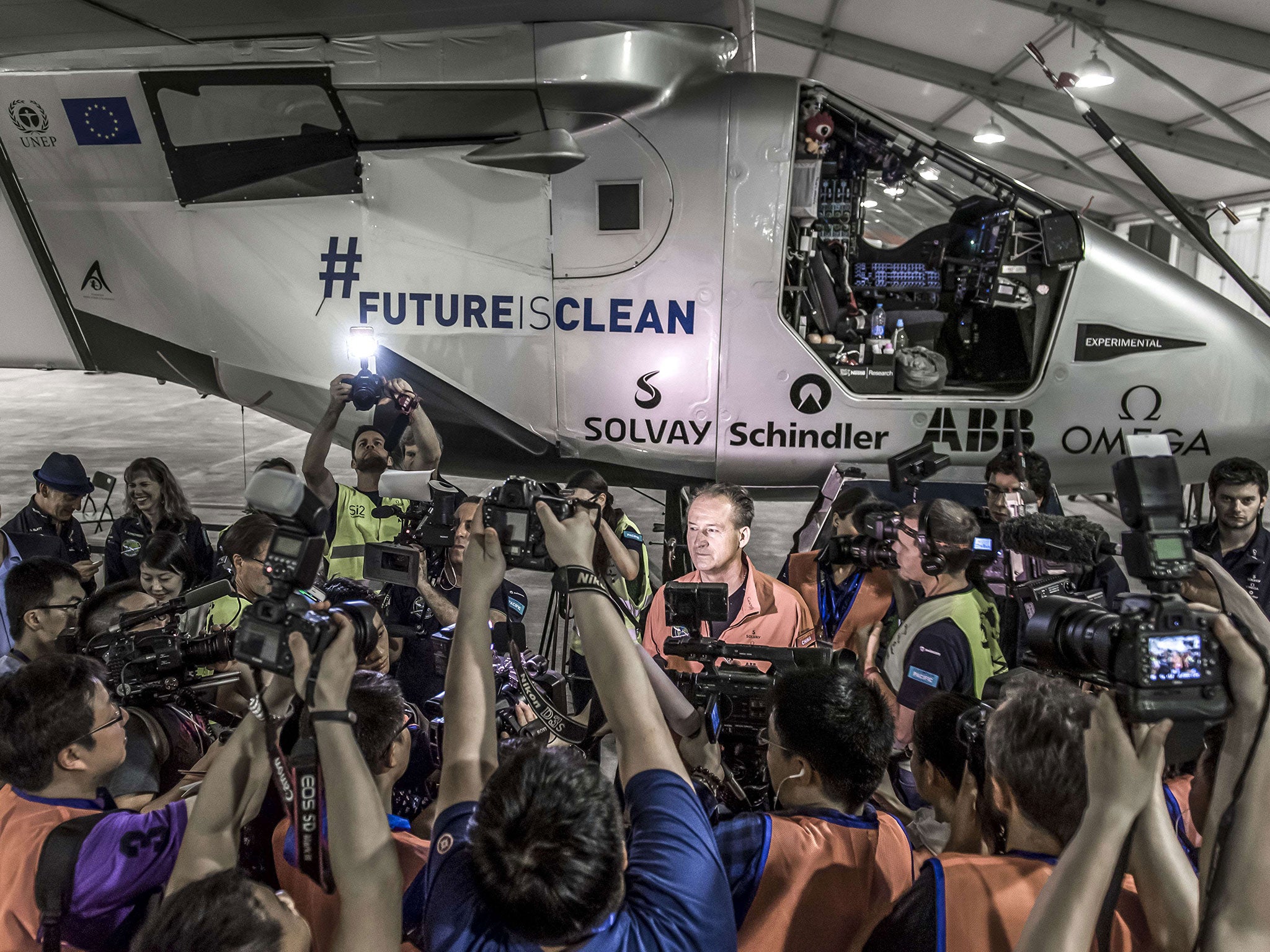Solar Impulse 2: Plane takes off from China for most dangerous leg in its round-the-world flight
André Borschberg's flight across the Pacific Ocean is expected to last six days and five nights

The Swiss pilot of a solar-powered plane has embarked on the longest leg of the first attempt to fly around the world without a drop of fuel.
André Borschberg took off from Nanjing, China, early on Sunday morning in the Solar Impulse 2 for a flight across the Pacific Ocean expected to last six days and five nights. If he succeeds it will also be the longest a solo pilot has ever flown an aircraft.
The plane’s journey started in March in Abu Dhabi, and the solar plane has stopped in Oman, India, Burma and China. The 5,079-mile flight from Nanjing to Hawaii – almost all of it over the sea – is the seventh of 12 flights and the most dangerous, as well as six times longer than any single leg so far.
“This is the moment of truth,” Mr Borschberg, 62, said before take-off.
He has been taking it in turns with another Swiss pilot, Bertrand Piccard, to fly the single-seater plane in a journey that will eventually take around five months to complete. After Hawaii, the plan is for Mr Piccard to fly the aircraft on to Phoenix, Arizona.
Mr Borschberg is in no doubt how tough the flight will be.
“It’s more in the end about myself; it’s going to be an inner voyage,” he told the BBC before departure. “It’s going to be a discovery about how I feel and how I sustain myself during these five or six days in the air.”
Mr Piccard said: “The pilot needs to do everything on his own. And it’s a very large aeroplane, big wingspans, sensitive to turbulence, flying quite slow... But we have an auto-pilot, we have toilets on board, we have food for days, water reserves and everything, and we are well trained.”
The carbon-fibre aircraft is covered with solar panels which drive the four propeller engines. During daylight hours, when it is designed to climb to 27,800ft, spare energy from the 17,000 solar cells is used to charge lithium batteries. These power the plane at night as it glides down to 5,000ft. The two-ton aircraft’s 236ft wingspan is longer than a Boeing 747’s and it has a top speed of 86 mph.
The pilots learned meditation techniques to maintain their concentration throughout the journey, and take regular, 20-minute naps.
The plane’s departure from China was delayed for about a month as the pilots waited for the necessary conditions: favourable winds to shorten its flying time and clear skies enabling it to absorb maximum solar energy.
Subscribe to Independent Premium to bookmark this article
Want to bookmark your favourite articles and stories to read or reference later? Start your Independent Premium subscription today.

Join our commenting forum
Join thought-provoking conversations, follow other Independent readers and see their replies